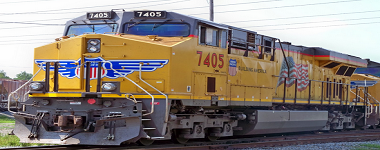Econintersect: Week 6 of 2015 shows same week total rail traffic (from same week one year ago) improved marginally according to the Association of American Railroads (AAR) traffic data. Intermodal traffic, which accounts for half of movements, contracted year-over-year. It is assumed that the slowdown caused by contract issues at the West Coast Ports was the cause of the drop in intermodal traffic.

This analysis is looking for clues in the rail data to show the direction of economic activity – and is not necessarily looking for clues of profitability of the railroads. The weekly data is fairly noisy, and the best way to view it is to look at the rolling averages which generally are in a general growth cycle.
A summary of the data from the AAR:
The Association of American Railroads (AAR) today reported U.S. rail traffic for the week ending Feb. 14, 2015.
Total U.S. weekly rail traffic for the week was 525,224 carloads and intermodal units, up 3.5 percent compared with the same week last year.
Total carloads for the week ending Feb. 14, 2015 were 288,959 carloads, up 6.7 percent compared with the same week in 2014, while U.S. weekly intermodal volume was 236,265 containers and trailers, down 0.1 percent compared to 2014.
All 10 carload commodity groups posted increases compared with the same week in 2014, led by grain, up 21.5 percent to 23,262 carloads; nonmetallic minerals, up 17.9 percent to 31,428 carloads; and chemicals, up 9.3 percent to 31,878 carloads.
For the first six weeks of 2015, U.S. railroads reported cumulative volume of 1,723,449 carloads, up 5.7 percent from the same point last year, and 1,479,247 intermodal units, which was flat compared to last year. Total combined U.S. traffic for the first six weeks of 2015 was 3,202,696 carloads and intermodal units, up 3.0 percent from last year.







